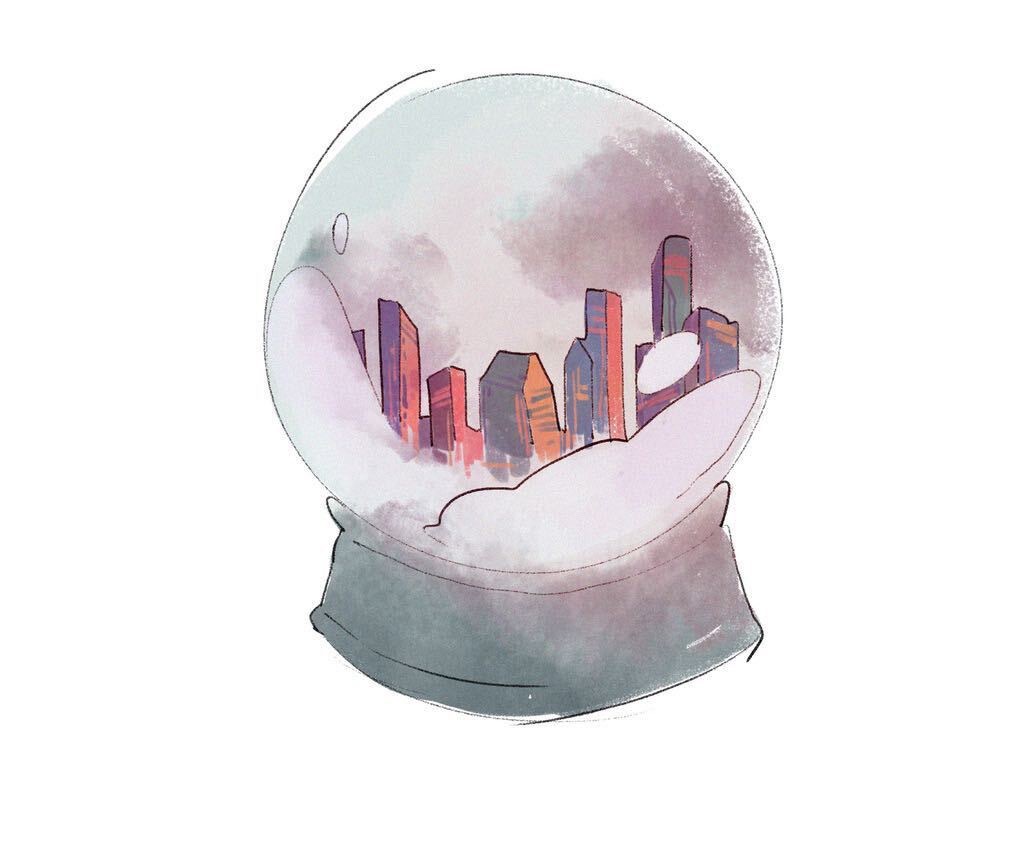Students waver Texas storms, keep up with school

During a power outage near Dallas, Texas, Kaitelyn Haynes, a sophomore majoring in architecture, sat in her dark room, holding up a flashlight while doing her physics homework due later that week. Overwhelmed by freezing temperatures and inconsistent power, Haynes and many other students struggled to keep up with classwork while overcoming Winter Storm Uri.
Beginning Feb. 13, Texas battled a winter storm that caused power outages, water shortages and over a dozen Texan deaths out of around 70 deaths caused by a storm that affected the entire nation.
After about three days of on-and-off power, students are now dealing with catching up in school. Weather conditions have gotten better, with highs reaching the upper 70s compared to the 20-30 degree Fahrenheit weather that persisted throughout the third week of February.
“We have power, heating, everything. We’re not really using the heat right now because the weather’s perfect, but a week ago, everything was completely different,” said Haynes, who lives in Los Angeles but had visited her family in Texas Feb. 15. “[If you went] outside, there was at least like two inches of snow everywhere. Wednesday was when [the power] was going off … every 45 minutes. Power would be on, power would be off. And that night is also when we lost water.”
LeeAnna Villarreal, a sophomore majoring in journalism, also experienced these problems in Houston. Relying on a generator to power up only a couple of lights and heaters, Villarreal said she wore three layers of clothing in her house.
“It’s just so crazy that the freeze lasted for a couple of days and that even [on] the second day there was still snow.” Villarreal, who has lived in Texas her whole life, said. “That was really surprising … I think the inside of my house was maybe like [in] the 50s or 40s.”
Due to global warming, cold air — called the polar vortex — that usually circulated exclusively to the North Pole area has traveled south. Increased temperatures in the Arctic have weakened the jet streams, or winds, causing the sudden cold temperatures in the United States, according to CBS News.
According to The Guardian, high demand for electricity caused the power outages that almost caused the entire Texas power grid to fail. The winter storm hit Texas harder than the rest of the U.S. because its independent grid system prevents it from buying power from other states.
Discrepancies of experiences also arose within Texas. According to USA Today, families of color in lower-income areas often do not have access to resources such as a car, funds for groceries or the ability to repair busted pipes quickly. In effect, these neighborhoods were hit the hardest and will take longer to recover from the storm.
“I know people posting from Dallas [are saying] the low income neighborhoods did not have power the longest, but yet the higher income neighborhoods had power and were doing fine,” Villarreal said. “I just know there’s just a lot of frustration within my community.”
In addition to trying to remain safe, students like Haynes and Villareal have found it difficult to attend classes due to the power outages. Haynes said she had to choose which classes to skip and switch between all her devices to distribute her battery usage. Despite her situation, some of her professors have not accommodated her needs.
“None of the professors were like, ‘Oh, reach out to me if you’re in Texas’… I just assumed if I’m in [this] situation I should tell my professor,” Haynes said. “It’s not like they’re going to change the curriculum to catch me up, so I just knew that it would be better to just tough it out and go to class [with] horrible [internet] connection than have to miss the class completely.”
Villarreal also said that, while professors have been understanding of the situation and allowing students to miss class, they still expected students to catch up soon.
“It was much worse after everything because I realized I have all this stuff I need to do, but during the storm I was kind of like, ‘There’s nothing I can do about it. I just have to figure it out when everything’s back to normal,’ but I think [my mental state] was definitely a lot worse right now and over the weekend, just like so much stress on me to get back to speed,” Villarreal said.
However, sophomore Giulia Orsenigo, who is located in Houston, said her professors allowed her to have extensions on classwork.
“All my professors [said], ‘Don’t worry, staying warm and being safe is more important right now,’ so they’re all really great, and they all gave me extensions on my assignments,” Orsenigo said.
Orsenigo, who is majoring in journalism and screenwriting, said she could not attend classes, not only because of the power outage, but also because she had to drive around in search of food. Food banks witnessed a surge in Texans who were in need of food and water following the freezing temperatures, according to The Guardian.
“All our food spoiled so we were driving around trying to find somewhere to eat,” Orsenigo said. “We were in a Burger King line for three hours.”
She said that staying optimistic was the hardest part of the situation, hearing that two million people were freezing in their homes.
“I also kept thinking how fragile our whole structure of society is … it was honestly kind of apocalyptic going out there and like seeing all the lines at the fast food [restaurants] and everything was empty and closed,” Orsenigo said. “This is such a fragile structure that we have built our society on and I feel like climate change, which is kind of one of the reasons why this happened, [COVID-19], and everything, it’s just kind of brought to light how fragile it all is.”

